A financial report provides an in-depth analysis of Australian businesses’ present and future economic conditions. It also helps you stay aligned with the Australian Accounting Standards Board (AASB) while offering insights into cash flow, profitability, and financial stability.
In today’s fast-evolving economic environment, where market fluctuations and regulatory changes pose challenges, financial report analysis is essential for informed decision-making, resource allocation, and long-term growth.
In this blog, we will discuss the financial report analysis that Australian businesses must perform and the types and methods that can help you streamline your finances. The blog will also provide additional information about the regulations you must comply with to maintain accounting standards in your industry type.
What is Financial Report Analysis?
Financial report analysis allows businesses to construct a detailed report of their company’s financial statements by examining the current financial position. For Australian businesses, the process is to ensure regularity with the Australian Accounting Standards Board (AASB) principles, which involve:
- Accrual Basis: Transactions are recorded when they happen, not necessarily when there is a cash exchange, providing a more accurate financial picture.
- Consistency: Applying the same accounting methods across multiple financial periods ensures comparability of financial information.
- Going Concern: Assuming the business will continue operating in the foreseeable future unless there is evidence to the contrary. Businesses must correspond to these principles to fulfill regulatory obligations and enhance the reliability of financial data.
7 Types of Financial Report Analysis For Australian SMEs
Financial analysis helps Australian SMEs turn numbers into strategic decisions. From cash flow to profitability, here are seven key types to know.
1. Profit & Loss (P&L) Income Statement Analysis
The purpose of the profit and loss income statement analysis is to summarise the revenues, expenses, and net profit or loss over a specific financial period. It offers insights into the company’s operational performance and profitability.
P&L statements help you identify primary revenue streams and significant expense categories. For example, if one of your business products or services is not performing well with constant operational expenses, it may indicate inefficiencies or areas where cost control is needed.
2. Balance Sheet Statement for Financial Foothold
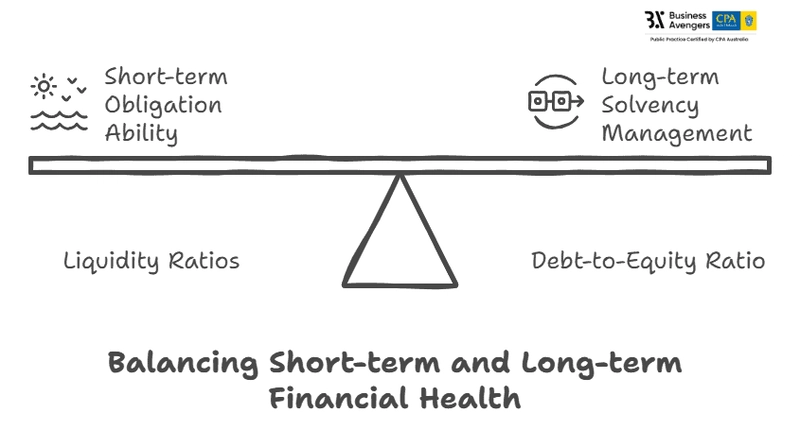
The balance sheet helps you clarify the financial position of your business at a particular point in time, detailing assets, liabilities, and shareholder’s equity. It suggests what your business owns and owes, providing a clear overview of your economic condition.
Assessing the balance sheet enables Australian SMEs to evaluate liquidity ratios (such as the current ratio) to determine their ability to meet short-term obligations. It also helps you understand the debt-to-equity ratio. This makes managing your business’s financial leverage and long-term solvency easier.
Insider tip: A high debt-to-equity ratio might suggest over-reliance on debt financing, which could be risky in volatile economic conditions.
3. Cash Flow Statement
A cash flow statement report helps you manage the enterprise’s cash inflows and outflows, including operational costs, investing, and financing resources. It denotes the key performance metrics highlighting how cash is generated and allocated, empowering business liquidity.
Effective cash flow management helps identify periods of cash shortages or surpluses. For example, a positive cash flow from operating activities indicates that the core business operations generate sufficient cash, which is a healthy sign. Conversely, consistent negative cash flow might signal underlying problems that need addressing.
4. Statement of Changes in Equity
If you want to review your business ownership equity and its changes over a specific period, this statement can help you retain your earnings, dividends paid, and capital injection. The equity changes financial report analysis identifies how profits are maintained and distributed within different business units.
You must always ensure how your business equity position evolves over time. For example, decreased retained earnings due to high dividend payouts might limit funds available for reinvesting in dedicated projects.
5. Budget vs. Actual Report
The budget vs. actual financial report compares projected financial performance (budgets) against actual results achieved during a period by allocating and using those budgets. It serves as a tool for business performance evaluation and financial planning.
For example, if actual sales fall short of budgeted targets, a review of sales strategies or market campaign conditions may be suggested.
6. Break-even Analysis Report
This financial analysis report evaluates the point at which total revenues equal total costs, indicating when a business will start generating profit. Conducting a break-even analysis helps Australian SMEs determine the minimum sales volume required to avoid losses.
This information is vital for setting manual sales targets and making informed decisions about pricing and cost control strategies so that you can determine when your product inventory turns into a sales pipeline.
7. Accounts Receivable & Accounts Payable Reports
These financial analysis reports monitor outstanding customer invoices (receivables) and amounts owed to suppliers (payables). They are crucial for effective cash flow management.
Spontaneously reviewing these reports enables Australian SMEs to manage their working capital efficiently.
For example, a high number of receivables might suggest issues with your present credit policies or collection practices. Meanwhile, managing cash outflows effectively ensures that the business maintains good supplier relationships and takes advantage of early payment savings.
Financial Report Analysis Methods For Australian SMEs
Businesses can employ various financial report analysis methods to gain valuable insights into key performance indicators, cash flow management, and operational efficiency.
1. Vertical Analysis
Ever wondered where exactly your funds are being used within the company?Vertical analysis helps Australian SMEs break down their financial statements into percentages of a total. For example, instead of just seeing that you spent $50,000 on operating expenses, you will know what percentage of your total revenue that amount represents.
Why does it matter?
- Helps you compare costs and income over different periods.
- Highlights areas where expenses are creeping up too much.
- Great for benchmarking against industry standards—so you know if you are overspending compared to competitors.
Note: Vertical analysis provides clarity on cost distribution, helping you make informed financial decisions to improve profitability.
2. Horizontal Analysis

If you want to know the past or future economic trends and shifts in your business, horizontal analysis is the most appropriate way to compare financial data across multiple periods. This financial report analysis helps you proactively identify the loopholes in your business revenue, making it highly valuable.
How it helps?
- Pinpoints steady growth or sudden declines.
- Helps you forecast future financial performance based on past trends.
- Alerts you to seasonal changes or economic shifts so you can plan accordingly.
Note: Horizontal analysis aids in strategic financial planning and forecasting based on present resources by highlighting areas of consistent performance or concern.
3. Liquidity Analysis
Liquidity analysis estimates your ability to meet short-term financial obligations. It involves using ratios like the current ratio and quick ratio and also ensures that your business has enough working capital to stay afloat.
Performing financial report analysis using liquidity:
- Current Ratio (Current Assets ÷ Current Liabilities): If your ratio is below 1, it means you don’t have enough liquid assets (cash, receivables, inventory) to cover short-term debts.
- Quick Ratio (Cash + Receivables ÷ Current Liabilities): This is a more stringent test, as it removes inventory from assets, ensuring you have enough temporary buffer funds.
- If your liquidity is low, you might need to speed up accounts receivable collections or cut expenses on invaluable resources.
Note: Liquidity analysis helps businesses avoid cash shortages and financial distress by ensuring they can cover short-term expenses.
4. Profitability Analysis
Profitability analysis calculates an enterprise’s ability to generate earnings relative to its revenue, assets, or equity. It uses key financial metrics like:
- Gross Profit Margin– Percentage of revenue left after deducting the cost of goods sold (COGS).
- Net Profit Margin – What remains after covering all expenses, including taxes and interest.
- Return on Assets (ROA)– How well assets are generating income.
Australian SMEs can assess operational efficiency and the effectiveness of their product or service pricing strategies using profitability analysis. For example, If your net profit margin is shrinking, it may indicate rising operating costs or inefficient pricing.
5. Solvency Analysis
Solvency analysis examines whether a company has the capacity to meet long-term obligations. It determines financial stability and risk levels using the Debt-to-Equity Ratio (Total Debt ÷ Shareholder Equity).
This financial report analysis based on your business’s owed money and available assets is vital for SMEs considering expansion or seeking financing.
Note: If your business wants to expand or secure investments, solvency analysis reassures lenders and investors that you are financially stable.
6. Cash Flow Analysis
Cash flow analysis looks at how cash moves in and out of your business, focusing on:
- Operating Cash Flow – Money generated from daily business activities.
- Investing Cash Flow – Money spent on acquiring or selling assets.
- Financing Cash Flow – Money borrowed or repaid (loans, dividends, etc.). An effective cash flow analysis helps Australian SMEs manage liquidity, ensuring day-to-day operations run smoothly.
Note: Operating cash flow should always be positive—if not, you might need to reduce expenses or improve collections.
7. Efficiency Analysis
Efficiency analysis evaluates how effectively a business uses resources using:
- Inventory Turnover Ratio – Measures how quickly inventory sales take place and are replaced with new supplies.
- Accounts Receivable Turnover – Tracks how fast customers pay invoices. A low inventory turnover might mean overstocking or slow-moving products—leading to cash flow issues. You must process receivables properly and ensure efficient credit control by applying stricter payment terms.
Note: Businesses with higher efficiency ratios tend to have better cash flow, lower costs, and higher profitability.
Australian Financial Regulations to Keep in Mind
Keeping these regulations in mind, businesses can achieve optimal financial performance from their business and adhere to government obligations.
- Superannuation Guarantee (Administration) Act 1992 mandates that employers contribute a specified percentage of an employee’s earnings to a complying superannuation fund. Failure to do so results in a superannuation guarantee charge.
- ASIC Regulatory Guides: The Australian Securities and Investments Commission (ASIC) provides regulatory guides to assist businesses on various topics, including financial services, corporate governance, and market integrity.
- Corporations Act 2001: This comprehensive legislation covers aspects such as company formation, duties of officers, financial reporting, and corporate insolvency.
- Taxation Laws: Australia’s taxation framework encompasses various laws that govern the imposition, assessment, and collection of taxes. Key legislations include the Income Tax Assessment Act 1997 and the Goods and Services Tax (GST) Act 1999.
Choose the Right Financial Partner with Business Avengers for Financial Report Analysis
At Business Avengers, our expert finance professionals specialise in providing financial analysis and outsourced accounting services to help Australian SMEs thrive. Our expertise ensures compliance with AASB and other Australian regulations like ATO.
We offer insights into cash flow, profitability, and financial stability so that you can streamline your financial operations and focus on what you do best—growing your business. Contact us today for a free assessment and discover how we can support your financial success.
FAQs
1. What are the common financial reporting mistakes SMEs should avoid?
SMEs should avoid errors such as poor record-keeping, misinterpreting financial data, failing to track cash flow, and not staying updated with regulatory changes.
2. How does increasing financial reporting thresholds impact small businesses?
Raising financial reporting thresholds reduces compliance burdens on smaller businesses, saving them significant costs while still requiring them to maintain financial records.
3. How can SMEs reduce financial reporting costs while staying compliant?
SMEs can use accounting software, automate bookkeeping processes, and seek professional advice to optimise financial reporting without incurring unnecessary expenses.

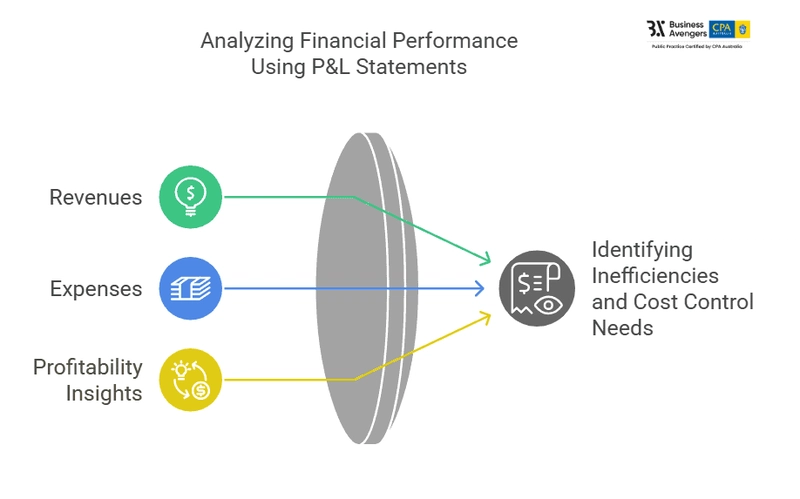

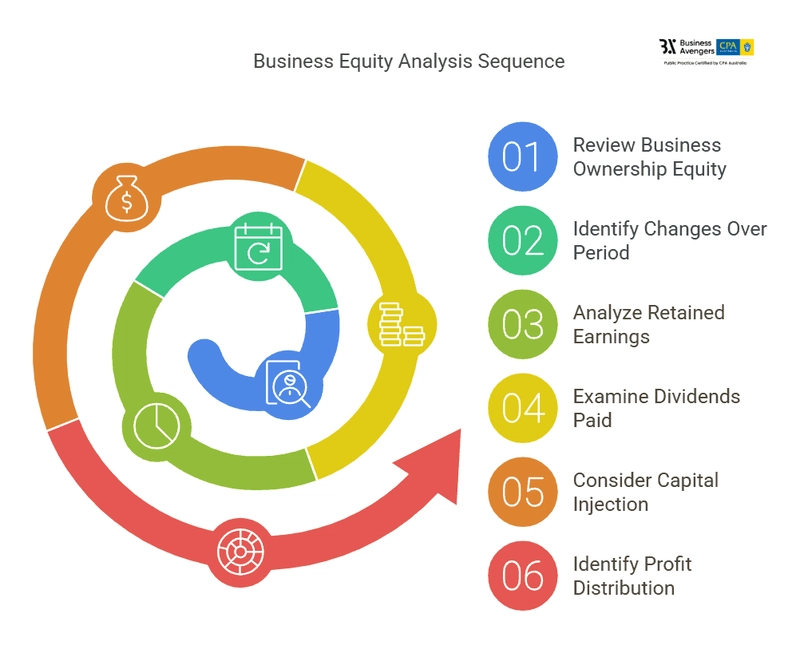
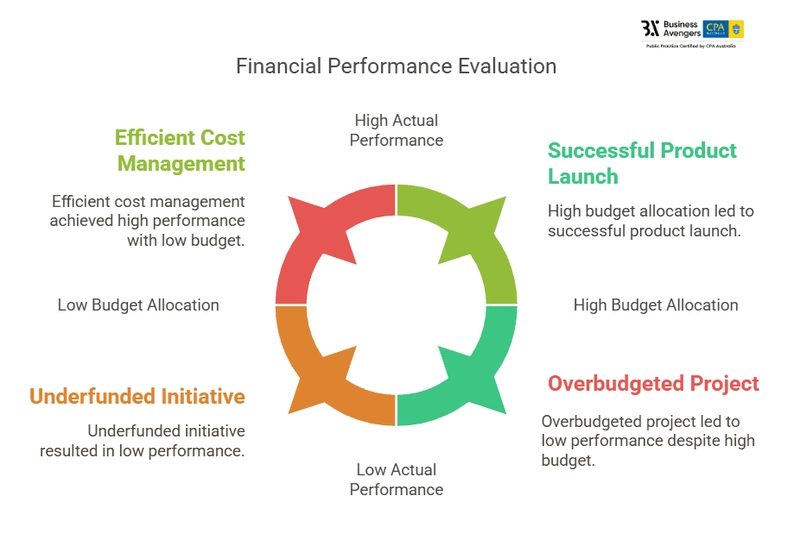
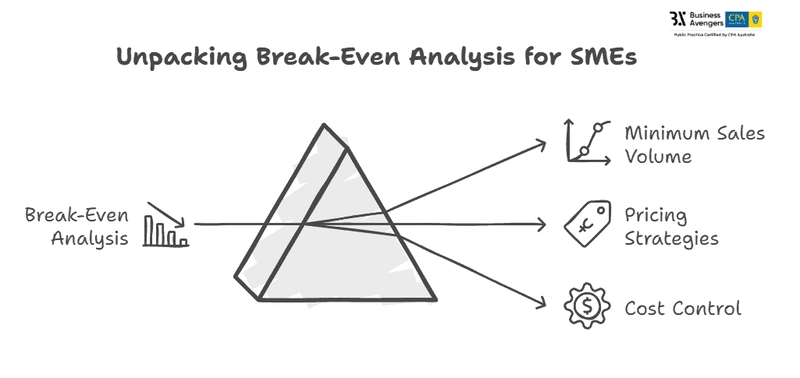
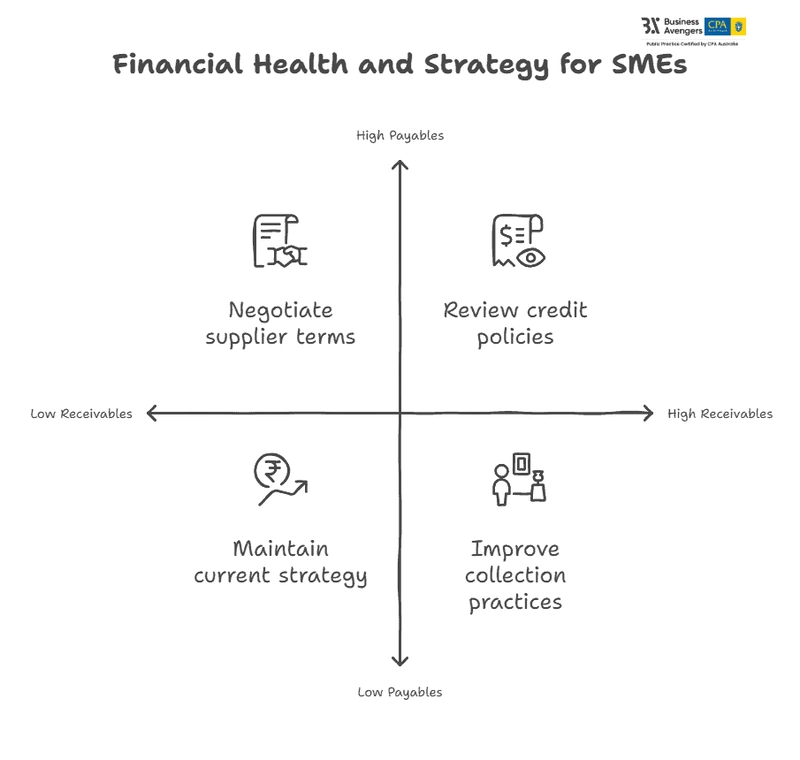
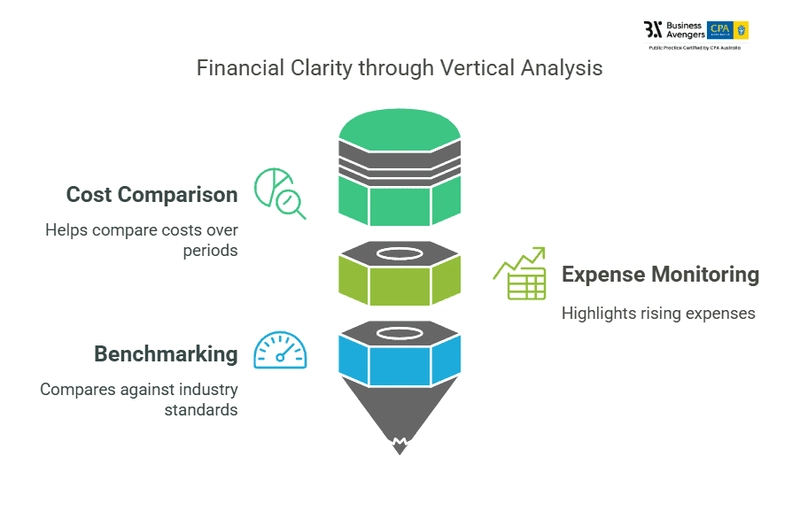
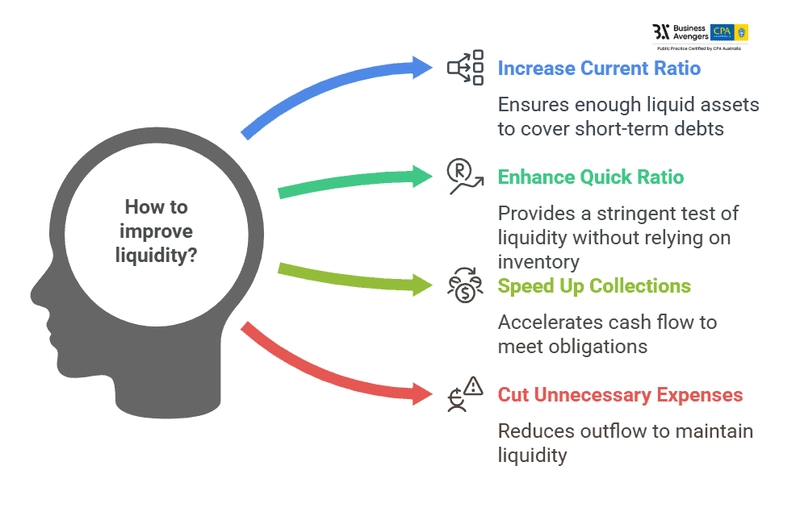

Top comments (0)